|
Fruticose lichens exhibit a three-dimensional structure. For example, they may be bushy, spindly, stringy, branching, swag-like or cup-shaped, but their main stems are nearly always round in cross-section. 
NPS/C. Vecchio Photos. The Cladonias are a highly diverse genus, and extremely difficult to differentiate without chemical testing or microscopic examination. A few examples are shown here.
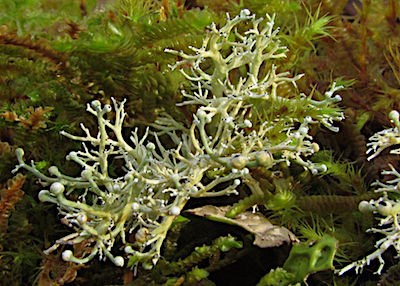
NPS/C. Vecchio Photo Sphaerophorus ("tree coral") can be found on the bark of many evergreens. Its apothecia are spherical knobs at the tips of its branches. 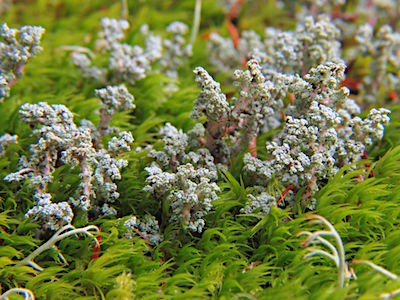
NPS/C. Vecchio Photo Stereocaulon ("foam" or "Easter lichen") is easily recognizable by its abundant squamules (scales). It is frequently found growing among mosses. 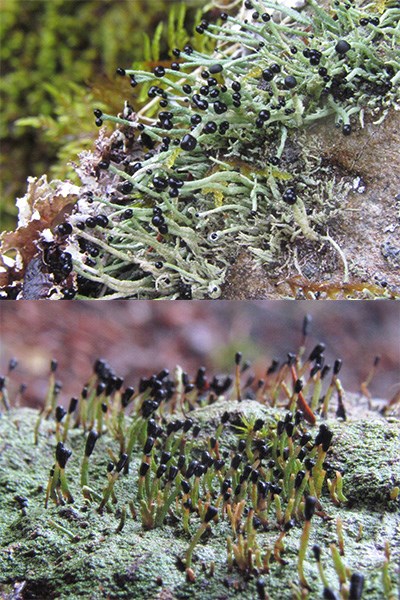
NPS/C. Vecchio Photos Pilophorus acicularis ("devil's matchstick") and Pilophorus clavatus ("tapered matchstick") are true pioneers, forming colonies on freshly broken rock. 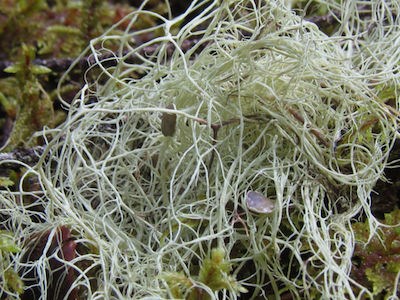
NPS/C. Vecchio Photo Alectoria sarmentosa ("witches' hair") is common in the park's lower forests. It is often mistaken for Spanish moss (a tropical epiphyte). 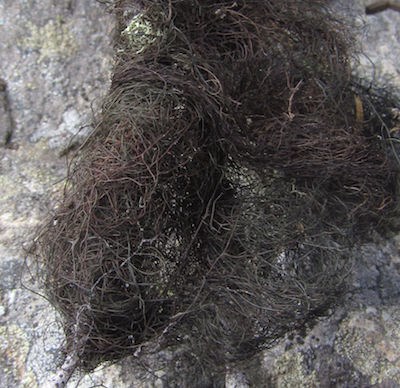
NPS/C. Vecchio Photo Bryoria fremontii ("horse-hair lichen") is wiry and stiff, and was eaten by the indigenous people of the area. It is one of few edible lichens. 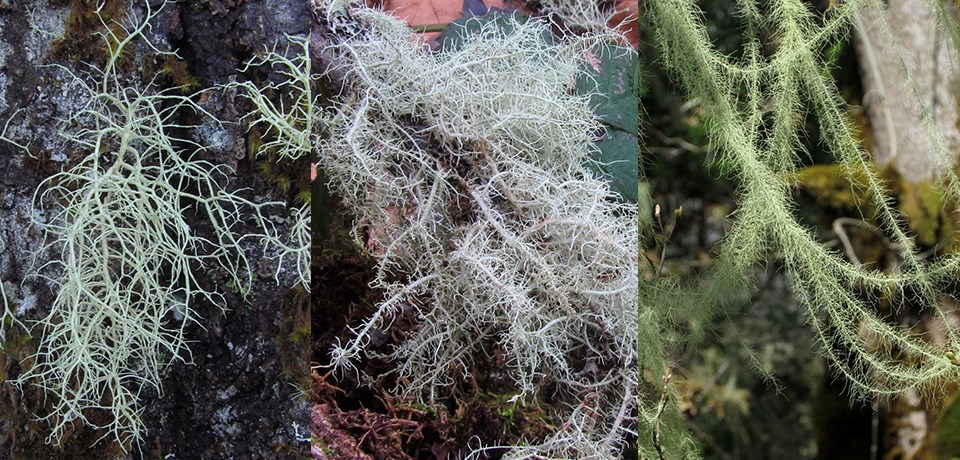
NPS/C. Vecchio Photos The Usneas ("beard lichens") are characterized by having a stretchy "spinal cord" running centrally through their branches. There are several different species in the park. Return to Lichen Guide |
Last updated: March 17, 2025
